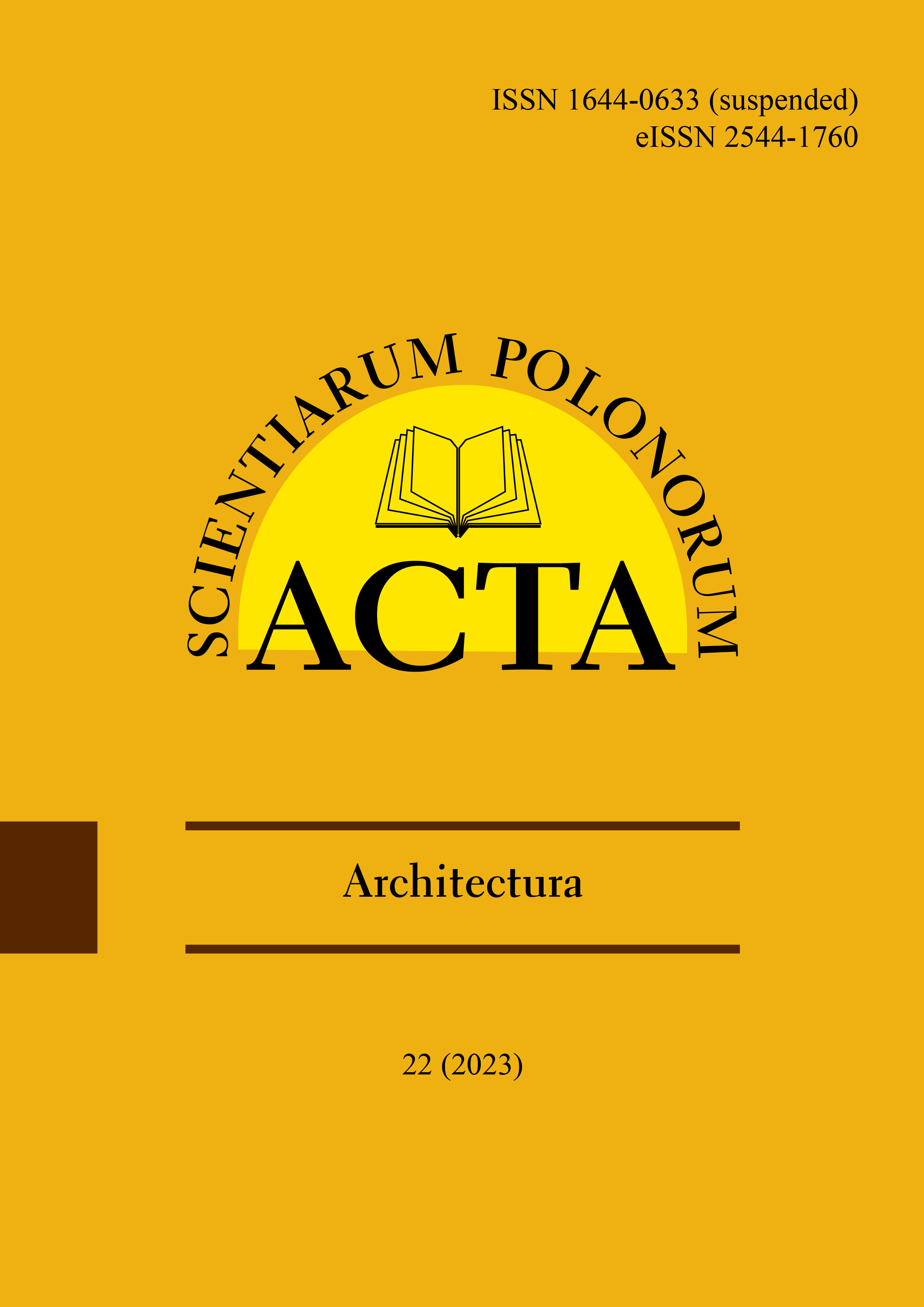Main Article Content
A sustainable living environment should be shaped in an ecological, economic and pro-social way. The aim of this work is to draw attention to this last, often overlooked aspect in the context of designing sustainable residential architecture, what can be achieved by taking care to maintain social relations at the appropriate level. The article reviewed the existing theories of sociologists, psychologists and architects on the features of architecture and residential spaces. The analysis of literature sources showed that there are architectural elements that can support the formation of social contacts. On their basis, a set of ten evaluation criteria was developed, which can be used for further research, e.g. in the context of evaluating pro-social solutions in selected architectural and urban projects.
Article Details
Alexander, C., Ishikawa, S., Silverstein, M., Fiksdahl-King, M. & Angel, S. (1977/2008). Język wzorców. Miasta, budynki, konstrukcja. Gdańsk: Gdańskie Wydawnictwo Psychologiczne.
Al-Kodmany, K. (2018). The Sustainability of Tall Building Developments: A Conceptual Framework. Buildings, 8 (1), 7. https://doi.org/10.3390/buildings8010007 (Crossref)
Chmielewski, J. M. (2010). Teoria urbanistyki w projektowaniu i planowaniu miast. Warszawa: Oficyna Wydawnicza Politechniki Warszawskiej.
Czarnecki, B. & Siemiński, W. (2004). Kształtowanie bezpiecznej przestrzeni publicznej. Warszawa: Difin.
Fromm, D. (1991). Collaborative Communities Cohousing, Central Living, and Other New Forms of Housing with Shared Facilities. New York: Van Nostrand Reinhold.
Gehl, J. (1971/2013). Życie między budynkami. Użytkowanie przestrzeni publicznych. Kraków: Wydawnictwo RAM.
Gzell, S. (1987). Fenomen małomiejskości. Warszawa: Instytut Urbanistyki i Planowania Przestrzennego Politechniki Warszawskiej.
Hall, E. T. (1976). Ukryty wymiar. Warszawa: Państwowy Instytut Wydawniczy.
Kosk, K. (2016). Social Participation in Residential Architecture as an Instrument for Transforming Both the Architecture and the People Who Participate in It. Procedia Engineering, 161, 1468–1475. (Crossref)
Kosk, K. (2017). Co-housing as the way to achieve a good density in the cities – Warsaw case study. Challenges of Modern Technology, 8 (3), 31–39. (Crossref)
Kołacz, K. & Podlasek, A. (2024). Pro-social solutions in residential environment created as a result of participatory design. Sustainability, 16 (2), 510. https://doi.org/10.3390/su16020510 (Crossref)
Lewicka, M. (2012). Psychologia miejsca. Warszawa: Wydawnictwo Naukowe Scholar.
McCamant, K. & Durrett, C. (1988/2003). Co-housing: A Contemporary Approach to Housing Ourselves (wyd. 2). Berkley: Ten Speed.
Story, L. & Saul, S. (2015, 8 February). Stream of Foreign Wealth Flows to Elite New York Real Estate. The New York Times. Retrieved from: https://www.nytimes.com/2015/02/08/nyregion/stream-of-foreign-wealth-flows-to-time-warner-condos.html [accessed: 06.12.2023].
Wallis, A. (1971). Socjologia i kształtowanie przestrzeni. Warszawa: Państwowy Instytut Wydawniczy.
Wallis, A. & Siemiński, W. (1974). Ankieta o jednostkach mieszkaniowych: opinie 91 architektów. Warszawa: Instytut Urbanistyki i Architektury.
Downloads

This work is licensed under a Creative Commons Attribution-NonCommercial 4.0 International License.

